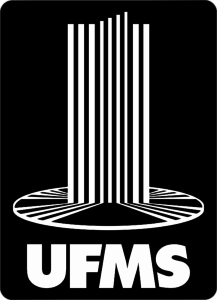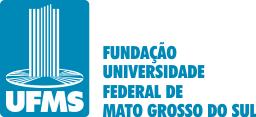Use este identificador para citar ou linkar para este item:
https://repositorio.ufms.br/handle/123456789/13012Registro completo de metadados
| Campo DC | Valor | Idioma |
|---|---|---|
| dc.creator | RAFAEL NAGY RAMOS | - |
| dc.date.accessioned | 2025-11-10T12:10:35Z | - |
| dc.date.available | 2025-11-10T12:10:35Z | - |
| dc.date.issued | 2025 | pt_BR |
| dc.identifier.uri | https://repositorio.ufms.br/handle/123456789/13012 | - |
| dc.description.abstract | This study analyzes the semiotic practices present in the Banho de São João, celebrated in Corumbá and Ladário, Mato Grosso do Sul, through the perspective of Discursive Semiotics, with a focus on Corumbá. Recognized as Patrimônio Cultural Imaterial de Mato Grosso do Sul in 2010 and, more recently, by IPHAN as Patrimônio Cultural Imaterial do Brasil in 2021, this tradition constitutes one of the most relevant religious and cultural manifestations in the region, celebrated in Corumbá and Ladário, with this dissertation focusing on the former. The research is structured around three specific objectives: (i) to describe the history and culture of the Banho de São João in Corumbá-MS, with emphasis on its origins, traditions, beliefs, and values; (ii) to analyze three ritual situations: the descent of the andores toward the banks of the rio Paraguai, the meeting of the andores in the ritual of greeting the images of the saint, and the banho de São João in the waters of the rio Paraguai, photographically recorded, as well as the songs of São João present in the documentary Banho de São João nas águas do Rio Paraguai (2023), interpreted through the semiotics of song, in order to describe the processes of meaning construction and their multisemiotic articulations within the festive context; and (iii) to reflect on the methodological and analytical path undertaken, discussing the contributions of Discursive Semiotics to the understanding of the plural social practices of the Banho de São João, while also assessing the relevance of the theoretical tools employed. Regarding methodology, the research adopts a qualitative, exploratory, and bibliographic approach, grounded in Discursive Semiotics, particularly the generative trajectory of meaning, with emphasis on the discursive level and the analysis of figurativity. Considering the specificity of the selected objects, the study also draws on developments of plastic semiotics, especially through the analysis of visual texts based on categories of the expression plane, with particular attention to the topological category, as well as on the developments of the semiotics of song. The investigation is guided by the following research question: how can Discursive Semiotics contribute to the understanding and unveiling of meanings in plural, multisemiotic social practices such as the Banho de São João? The choice of this object of study is due to its cultural and religious relevance in Corumbá-MS. The analysis of the semiotic practices of the festivity allows for an understanding of its cultural expressions and its role in preserving local customs and traditions. It is expected, therefore, that this research will contribute to the field of Discursive Semiotics by applying its concepts to a specific and still little-explored cultural context, opening new possibilities for future investigations on this festivity. Keywords: Semiotic practices; Banho de São João; Memory; Identity; Intangible Heritage. | - |
| dc.language.iso | pt_BR | pt_BR |
| dc.publisher | Fundação Universidade Federal de Mato Grosso do Sul | pt_BR |
| dc.rights | Acesso Aberto | pt_BR |
| dc.subject | Semiótica Discursiva | - |
| dc.subject | Práticas semióticas | - |
| dc.subject | Banho de São João | - |
| dc.title | PRÁTICAS SEMIÓTICAS NO BANHO DE SÃO JOÃO:PATRIMÔNIO CULTURAL IMATERIAL EM CORUMBÁ-MS | pt_BR |
| dc.type | Dissertação | pt_BR |
| dc.contributor.advisor1 | Sueli Maria Ramos da Silva | - |
| dc.description.resumo | Este estudo analisa as práticas semióticas presentes no Banho de São João, em Corumbá, Mato Grosso do Sul, a partir da abordagem da Semiótica Discursiva. Reconhecida como Patrimônio Cultural Imaterial de Mato Grosso do Sul em 2010 e, mais recentemente, pelo IPHAN como Patrimônio Cultural Imaterial do Brasil em 2021, essa tradição constitui uma das manifestações religiosas e culturais mais relevantes da região, sendo celebrada em Corumbá e Ladário, com foco desta dissertação na primeira. A pesquisa está estruturada em três objetivos específicos: (i) descrever a história e a cultura do Banho de São João de Corumbá-MS, com ênfase em suas origens, tradições, crenças e valores; (ii) analisar três situações rituais: a descida dos andores em direção às margens do rio Paraguai, o encontro dos andores no ritual do cumprimento das imagens do santo e o banho de São João nas águas do rio Paraguai, registradas fotograficamente, bem como as cantigas de São João presentes no documentário Banho de São João nas águas do Rio Paraguai (2023), interpretadas à luz da semiótica da canção, a fim de descrever os processos de construção de sentido e suas articulações multissemióticas no contexto festivo; e (iii) refletir sobre o percurso metodológico e analítico desenvolvido, discutindo as contribuições da Semiótica Discursiva para a compreensão das práticas sociais plurais do Banho de São João, avaliando, ao mesmo tempo, a pertinência das ferramentas teóricas empregadas. No que se refere à metodologia, a pesquisa adota uma abordagem qualitativa, de caráter exploratório e bibliográfico, fundamentada na Semiótica Discursiva, especialmente no percurso gerativo do sentido, com ênfase no nível discursivo e na análise da figuratividade. Considerando a especificidade dos objetos selecionados, recorremos também aos desdobramentos da semiótica plástica, sobretudo por meio da análise de textos visuais com base em categorias do plano de expressão, em especial a categoria topológica, assim como aos desdobramentos da semiótica da canção. A investigação parte da seguinte questão: como a Semiótica Discursiva pode auxiliar na compreensão e no desbastamento de sentidos de práticas sociais de natureza multissemiótica e plural, como o Banho de São João? A escolha desse objeto de estudo deve-se à sua relevância cultural e religiosa em Corumbá-MS. A análise das práticas semióticas da festividade permite compreender suas expressões culturais e seu papel na preservação dos costumes e tradições locais. Esperamos, assim, que a pesquisa contribua para o campo da Semiótica Discursiva, ao aplicar seus conceitos a um contexto cultural específico e ainda pouco explorado, abrindo novas possibilidades para investigações futuras acerca dessa festividade. Palavras-chave: Práticas semióticas; Banho de São João; Memória; Identidade; Patrimônio Imaterial. | pt_BR |
| dc.publisher.country | Brasil | pt_BR |
| dc.publisher.initials | UFMS | pt_BR |
| Aparece nas coleções: | Programa de Pós-graduação em Estudos de Linguagens | |
Arquivos associados a este item:
| Arquivo | Tamanho | Formato | |
|---|---|---|---|
| Dissertação - Rafael Nagy Ramos.pdf | 1,86 MB | Adobe PDF | Visualizar/Abrir |
Os itens no repositório estão protegidos por copyright, com todos os direitos reservados, salvo quando é indicado o contrário.

